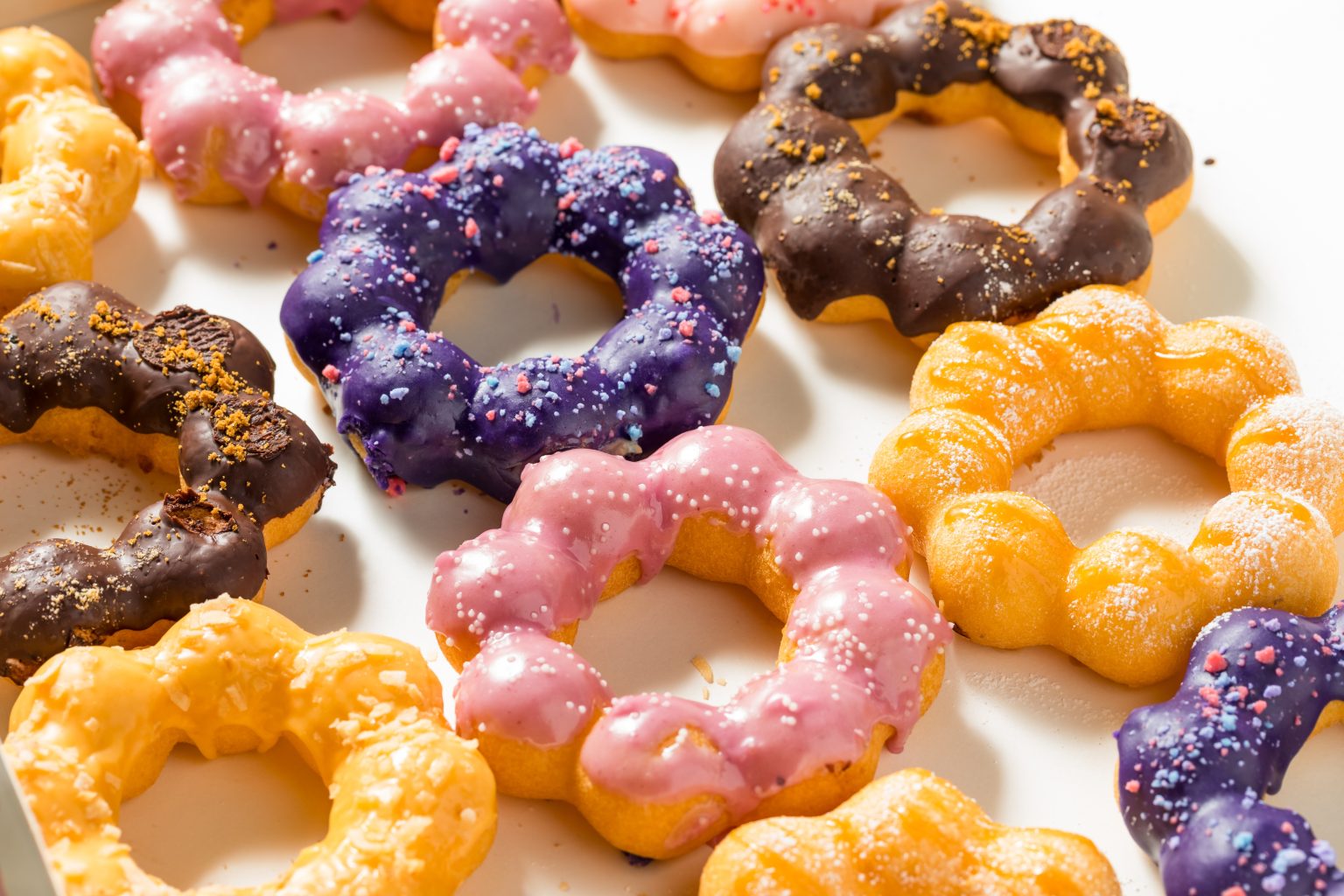Mochi donuts are a delightful fusion of traditional Japanese mochi and classic American donuts. These treats offer a chewy middle and a crispy outer layer, making them an irresistible snack. Unlike regular donuts, mochi donuts are made with glutinous rice flour, giving them a unique texture that can’t be found elsewhere.
For those who love experimenting in the kitchen, homemade mochi donuts are a rewarding challenge. With just a few ingredients like glutinous rice flour, silken tofu, and cornstarch, anyone can create these bubble-ringed delights at home. Added flavours like matcha, strawberry, and Nutella glazes elevate this treat to the next level.
Donut recipes have never been this exciting. Mochi donuts are not only delicious but also visually appealing, often crafted into a ring of connected dough balls. Their unique look and texture set them apart. These doughy delights are perfect for anyone looking to add something new and exciting to their culinary repertoire.
Exploring the Unique Qualities of Mochi Donuts
Mochi donuts are a delightful treat offering a unique combination of textures and flavours. This section examines their fusion origins and distinctive texture and taste.
Culinary Fusion and Origins
Mochi donuts are a fusion of traditional Japanese mochi and American-style doughnuts. Mochi is a sweet Japanese rice cake made from glutinous rice flour, known for its chewy texture. The concept of combining mochi with a doughnut originated in Japan, made popular internationally by Mister Donut‘s pon de ring.
The success of mochi donuts spread to various countries, including the United States. Today, several bakeries like Third Culture Bakery in Colorado and California, and many in New York City, proudly feature them on their menus. They are typically baked or fried, offering a unique culinary experience. This blend of cultures in mochi donuts makes them an interesting and tasty innovation in the dessert world.
Texture and Taste Profile
The main appeal of mochi donuts lies in their distinctive texture and flavour. The use of glutinous rice flour gives them a chewy and soft consistency on the inside while being crispy on the outside. This is due to combining rice flour with regular donut dough, leading to an unusual yet pleasing mouthfeel.
In terms of flavour, mochi donuts are often less sweet than traditional doughnuts. They can be found in various flavours, such as strawberry, matcha, and even sakura. Some recipes include additions like freeze-dried strawberries or silken tofu to achieve a smooth consistency and enhanced flavour profile.
Whether enjoyed plain or with creative toppings, mochi donuts offer a delectable twist on classic doughnuts, making them a popular choice for dessert lovers.
Crafting Your Mochi Donut
Crafting your own mochi donuts can be a rewarding experience. Key points include selecting the right ingredients, mastering the baking process, and getting creative with decorations and glazes. Attention to detail in each step ensures delicious and visually appealing donuts.
Ingredients and Substitutions
Mochi donuts rely on glutinous rice flour (mochiko) for their distinct chewiness. Tapioca flour can also be used for a similar texture. For a gluten-free version, ensure all ingredients are labelled gluten-free.
Milk is essential, but there are vegan alternatives like almond or soy milk.
You’ll also need granulated sugar, baking powder, and a little salt for balance.
Vegetable oil is ideal for frying, providing a neutral taste. Substitute with other oils like canola if necessary.
Sweetening comes from sugar, and matcha powder can be added for flavour.
The Baking Process
Start by combining the glutinous rice flour, tapioca flour, sugar, and baking powder in a bowl.
Mix wet ingredients, such as milk and melted butter, separately.
Combine the dry and wet mixtures until a smooth, sticky dough forms.
Parchment paper helps in shaping the donuts.
Use a piping bag to form small dough balls into a ring on parchment squares.
Heat oil in a pot to 350°F using a thermometer.
Lower the dough rings carefully into the hot oil and fry until golden, flipping occasionally. Drain on paper towels.
Decoration and Glazing Techniques
For glazing, a basic sugar glaze can be made by mixing icing sugar with a little milk.
Strawberry glaze uses icing sugar and puréed fresh strawberries.
Matcha glaze involves icing sugar, matcha powder, and milk.
Melt white chocolate or Nutella for a decadent topping.
Dip cooled donuts into glaze or spread using a knife.
Sprinkle with decorations like sprinkles or crushed nuts for extra texture.
Experiment with flavours by adding matcha powder or other extracts to the glaze.



